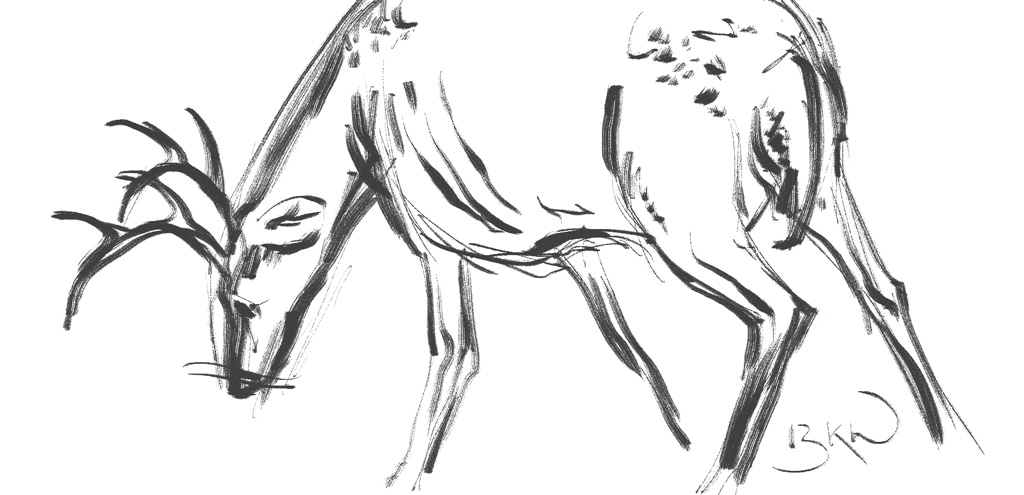Prions are normal body proteins found in the brain of many animals, including humans. It is believed that prion proteins play a role in brain cell communication.
Infectious prions are, lightly put, renegade zombie-proteins. They propagate by converting normal healthy prion proteins into the infectious unhealthy form.
Proteins gain their functions through their molecular structure, particularly from how they fold. Infectious prions are improperly folded proteins. They act as a template to convert healthy prion proteins into infectious ones by causing them to misfold. These newly infectious prion proteins can then go off and cause more conversions, much like the way a fictional zombie infects other humans.
Prion infectious typically cause spongiform encephalopathies. Infectious prion proteins tend to aggregate into dense plaques which form holes in the brain, resulting in a sponge-like semblance.
Prion infections tend to have a very long incubation time, lasting from several years to decades. Infectious prion proteins are also very resistant to things like heat, disinfectants, and proteases, proteins which specialize in the destruction of other proteins.
Chronic wasting disease (CWD) is a fatal prion disorder that affects cervid animals like deer, elk, and moose. The disease is characterized by chronic weight loss resulting in death. It is one of the most easily transmitted prion diseases known.
Researchers from New York University have developed a vaccine against CWD. In their study, the researchers exposed 11 deer to prion-infected brain tissue, after administering the vaccine to five of them. The 11 deer were all kept in the same constant exposure to the infectious prions.
Within two years, all of the untreated deer developed CWD. Of the vaccinated deer, four developed the disease, notably with a much longer incubation period, while one remains healthy.
One out of five does not seem significant, but when the fact that these infectious prions are incurable is considered, it is an important finding.
The vaccine was developed by using genetically modified Salmonella bacteria. This was done to mimic ingestion, the typical infection route for prion diseases. The Salmonella vector was weakened so that it was no longer able to cause infections.
The bacteria were genetically modified to express the prion protein. This allows the immune system presence in the intestine to develop an antibody response against the infectious protein. The group had previous success with a similar vaccine in mice.
A member of the parliament announced in December that the federal and Saskatchewan governments would contribute up to 1.16 million dollars to the development of a new vaccine for CWD. The importance of this new vaccination is that CWD is affecting wildlife herds of elk in Saskatchewan and Alberta.
It is hoped that these developing vaccines will help protect captive cervids herds from CWD, which can see an infection rate of up to 100 per cent within a captive population.
These vaccines will potentially be beneficial to other species, as similar technologies can be implemented in the prevention of bovine spongiform encephalopathy in cattle and prion diseases in humans.
Prion diseases in humans can be caused through various routes. Creutzfeldt-Jakob disease (CJD), a human prion disease, has many different categories, the most common of which is sporadic CJD which occurs in one out of one million people and makes up 85 per cent of CJD cases. Other types of CJD include a genetic disease known as familial CJD, and iatrogenic CJD, which is attributed to contaminations through medical procedures.
Bovine spongiform encephalopathy, colloquially known as mad cow disease, is a prion disease that can spread from cattle to humans, and the suspected cause of variant CJD. Mad cow disease devastated the U.K. in the 1990s.
Kuru is a prion disease that was transmitted among the Fore tribe of Papua New Guinea, first noticed in the 1950s. The disease spread through the practice of mortuary cannibalism. The remains of the deceased were consumed by other members of the tribe and it was through the remains, particularly the brain, that the kuru prions spread.
Prions are interesting since they are simply protein. Conventional infectious agents like viruses, bacteria, fungi, protozoans, and parasites have some sort of genome – genetic information that allows them to continue to propagate and infect. Zombies may be real after all, if not at a macroscopic scale.





